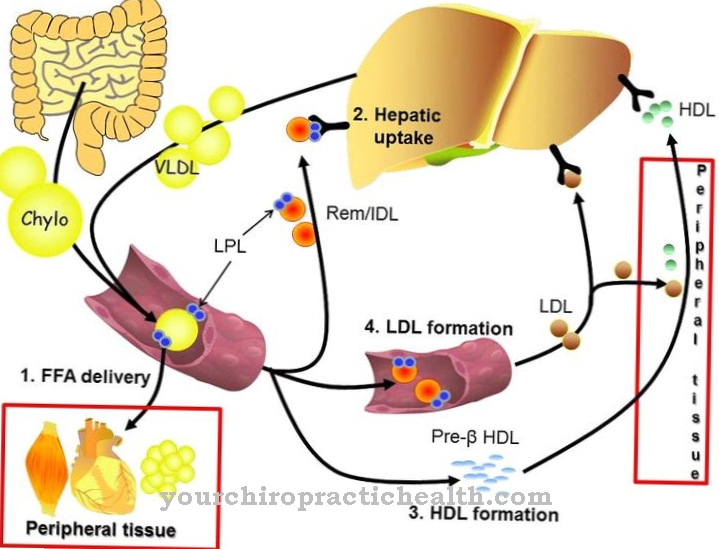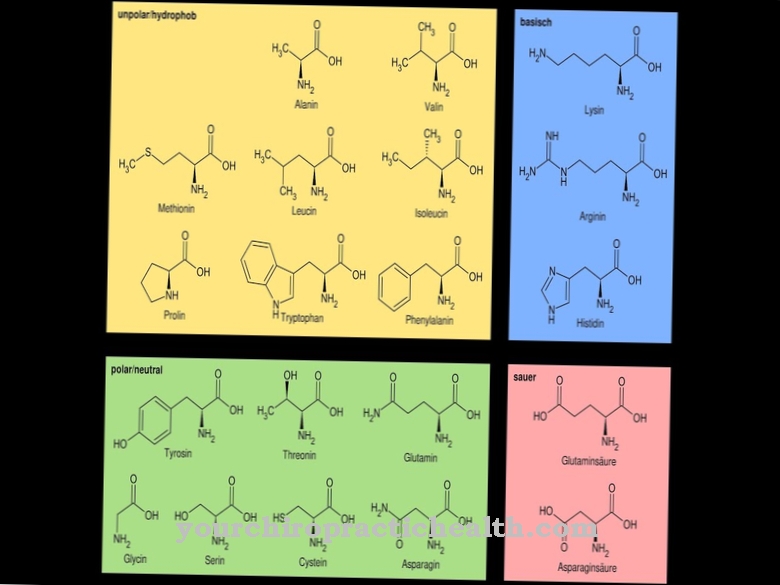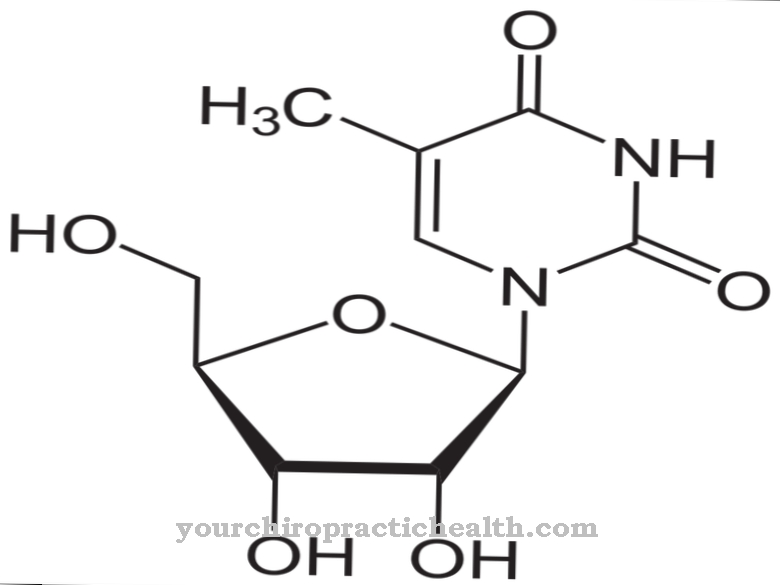Kinesin represents a complex of certain motor proteins in eukaryotic cells. In addition to other motor proteins such as dynein or myosin and other structural proteins, it is involved in the construction of the cytoskeleton. It is used to transport macromolecules, vesicles and cell organelles from the cytoplasm or nucleus to the cell membrane.
What is kinesin?
Kinesins are a group of motor proteins with similar properties and functions. They consist of two heavy and two light protein chains.The head region, neck and tail part of the molecule are located on the heavy protein chains.
The light protein chains attach to the tail. Kinesin is used to transport cell organelles, vesicles and biomolecules along microtubules. The microtubules represent a rail system made up of the protein tubulin, which always grows from the cell nucleus towards the cell membrane. The growing microtubule end is called the so-called plus end. This means that kinesin transports the biological substances and cell organelles only in the direction of the plus end (anterograde transport).
The transport in the direction of the minus end (retrograde transport) is caused by a complex of other motor proteins, the dynein. Kinesin is in the form of a dimer. As part of the quaternary structure of the protein, the two heavy and two light chains form a protein complex which does not have any covalent bonds between the individual protein chains. Kinesin has two motor domains (head domains) that are responsible for movement along the microtubules.
Function, effect & tasks
The main task of kinesin is to transport cell components and molecules from inside the cell to the cell membrane. Among other things, degraded cell components are removed from the cell, enzymes are secreted, hormones released, membrane proteins are brought from the place of synthesis to the membrane and much more.
Signal substances for communication between the cells are also transported into the extracellular area. In neurons, for example, neurotransmitters are transported within vesicles from the cell nucleus in the direction of the axons and synapses. From there, signals are passed on to other nerve cells with the help of neurotransmitters. The vesicles, cell organelles or biomolecules bind to the kinesins via connecting proteins. With the help of the two motor domains (heads), the kinesin complex runs along the microtubule. The binding of one head is repeatedly broken with energy transfer by splitting ATP to ADP, while the binding of the other kinesin head is initially retained.
The detached head region, however, immediately binds again to another binding site of the microtubules in the direction of the plus end, and at the same time the other head domain dissolves while splitting ATP. The cleavage of ATP to ADP at the kinesin binding site on the microtubules leads to a change in the conformation of the entire kinesin complex, which triggers its movement. This process is repeated until the kinesin complex has reached the cell membrane. At the destination, the cell organelles or molecules to be transported are split off from the kinesin complex.
Education, occurrence, properties & optimal values
Kinesin is found in all eukaryotic cells. There are a variety of kinesin proteins. However, this protein complex has hardly changed in the tribal history of the eukaryotic organisms in the functionally important head region. Its function in unicellular eukaryotes such as the amoeba is exactly the same as in the multicellular organisms of the animal and plant kingdom. Kinesin transports cell organelles and molecules towards the cell membrane. The interaction of kinesin and microtubules is also a universal phenomenon.
Minor genetic changes occur in the tail portion of the protein complex. This area reacts to the changing components that have to be transported and naturally bound to kinesin beforehand. The kinesins are not related to the dyneins, which organize the transport of molecules and molecular complexes from the cell membrane towards the cell nucleus. However, there are related relationships to myosin, which with the help of actin is responsible for muscle movement and within the cell for small transport routes of cell organelles due to similar movement patterns.
Diseases & Disorders
Mutations in the kinesin complex can lead to disruptions in intracellular transport. In the context of these disorders, a complex of neurological diseases is known, which are referred to as hereditary spastic paraplegia (HSP).
There are over 50 different types of this condition, all of which are genetic. The spastic spinal paralysis SPG 10 was examined in more detail. In this disease, a mutation leads to an incorrect production of a kinesin complex called KIF5A. Some active ingredients and cell organelles are transported incorrectly and no longer reach the site of action. These are especially active substances that are required in the axons of neurons. The corresponding neurons degenerate and can no longer properly transmit movement impulses.
This disorder affects leg motor skills. This leads to increasing spastic paralysis of the legs. In the advanced stages of the disease, the affected patient is dependent on a wheelchair. However, the spastic paraplegia are a group of several diseases with similar symptoms. They are based on different mutations. 48 different HSP gene locations are known. In addition to the restriction of leg motor skills, other neurological symptoms can also occur depending on the disease.
It is believed that other neurodegenerative diseases are also caused by transport disorders within the cell. However, further investigations are required to research the exact relationships. So far there is growing awareness that nerve cells in particular are impaired when the kinesin function is impaired. To what extent other body cells are influenced, there is still insufficient knowledge.
























.jpg)



